kirkle/iStock/GettyImages
Cut from the breast area of the beef, brisket is rich, meaty and packed with flavor but it's also notoriously tricky to cook. The tough, boneless cut has a layer of external fat but little marbling to keep the meat moist, and it's full of tough connective tissue that requires long, slow cooking. Baking bags hold in moisture, so using one to prepare your brisket can help keep the lean beef moist as it cooks to falling-apart tenderness.
Trim visible fat from the brisket. Don't trim too closely because a small amount of fat keeps the meat moist and flavorful.
Cut several 1/2-inch deep, evenly-spaced slits on both sides of the meat, using the tip of a sharp knife. If desired, slice a garlic clove into slivers, then poke the garlic into the slits.
Place a small amount of flour in the oven bag, then shake the bag to coat the inside. Lay the bag in a rectangular roasting pan and put the brisket in the bag.
Pour about a cup of beef broth into a mixing bowl, then add a small amount of Worcestershire sauce for extra flavor. Season the mixture with coarsely ground black pepper and your choice of fresh or dried herbs such as marjoram, thyme, oregano, rosemary or sage. Pour the liquid over the brisket.
Arrange your choice of fresh vegetables around the brisket, if desired. Common choices include sliced bell peppers, baby carrots, celery or quartered red potatoes.
Tie the bag closed with the tie included in the package. Poke several holes in the top of the bag to prevent buildup of steam that can cause the bag to explode.
Place the brisket in an oven preheated to 325 degrees Fahrenheit. Bake the meat for 2 to 2 1/2 hours, or until the brisket is tender and a meat thermometer registers 145 F when inserted into the center of the meat.
Allow the brisket to rest for 3 to 5 minutes. Transfer the meat to a serving platter and cut it into slices.
Arrange the vegetables around the sliced brisket. Pour the meat drippings over the meat or thicken them to make gravy. Your beef brisket is ready to serve.
Related Articles
How to Cook Brisket Slowly With a ...

How to Cook a Roast in a Bag
How to Cook Chuck Roast in a Baking Bag
How to Slow Cook a Pot Roast With Beef ...

How to Cook the Neck of a Deer
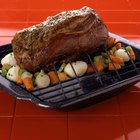
How to Cook a Whole Sirloin Tip Beef ...

How to Cook Barbecue Deer in the Slow ...

How to Cook Tender Rolled Flank Steaks ...

How to Marinate BBQ Chicken Thighs & ...
How to Cook a Bottom Round Roast & ...
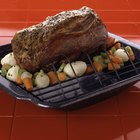
How to Cook a Really Tender Beef Roast ...

How to Cook Beef Round Cubes on a Pan
How to Cook Roast Beef in a Cast-Iron ...
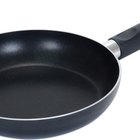
How to Cook Beef Top Round Pot Roast

Slow Cooking an Eye of the Round Steak ...

How to Cook Pan Fried Deer Tenderloin
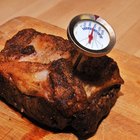
How to Cook Bottom Round Roast in a ...

How to Pan Cook a Sirloin to Medium-Well

How to Roast a Whole Chicken in a ...
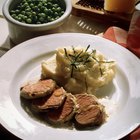
How to Make a Juicy Pork Tenderloin
References
- The Deluxe Food Lover's Companion; Sharon Tyler Herbst and Ron Herbst
- The Knights at the Round Table: Life's Funny Moments and Eclectic Recipes; Judith Knigh
- Family Living: Simply Delicious Suppers; Leisure Arts
- Jewish Holiday Cooking: A Food Lover's Treasury of Classics and Improvisations; Jayne Cohen
- University of Illinois Extension: Meat Temperature Chart
Writer Bio
M.H. Dyer began her writing career as a staff writer at a community newspaper and is now a full-time commercial writer. She writes about a variety of topics, with a focus on sustainable, pesticide- and herbicide-free gardening. She is an Oregon State University Master Gardener and Master Naturalist and holds a Master of Fine Arts in creative nonfiction writing.